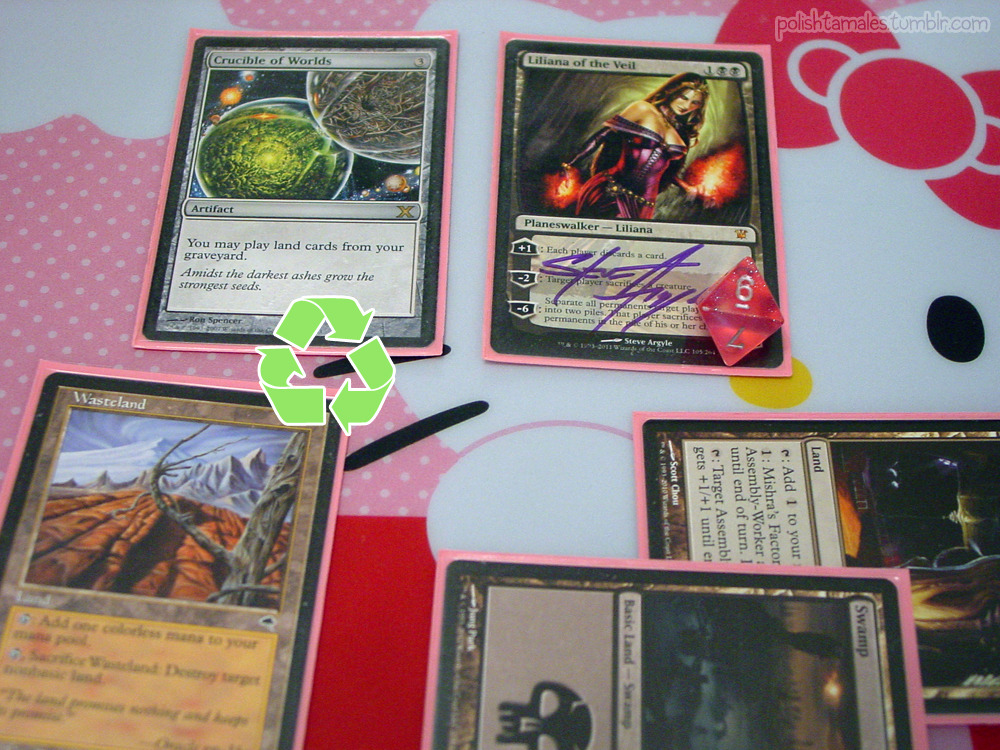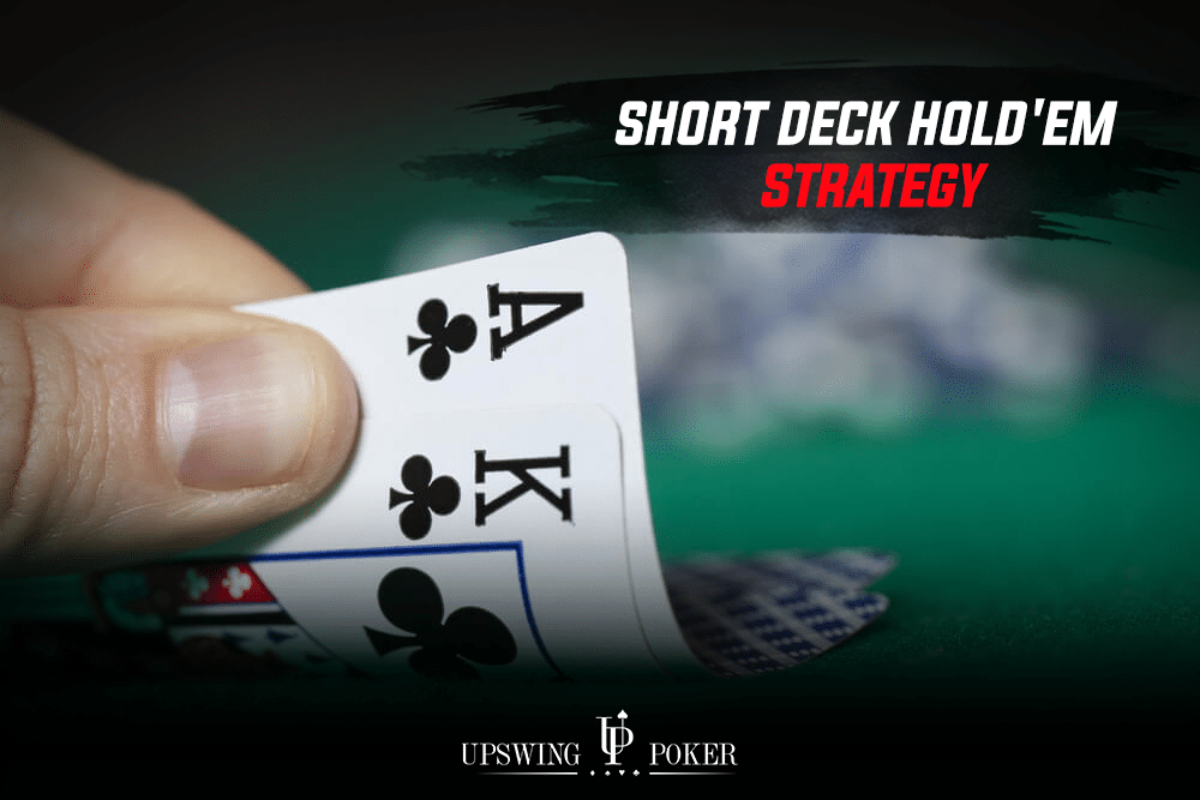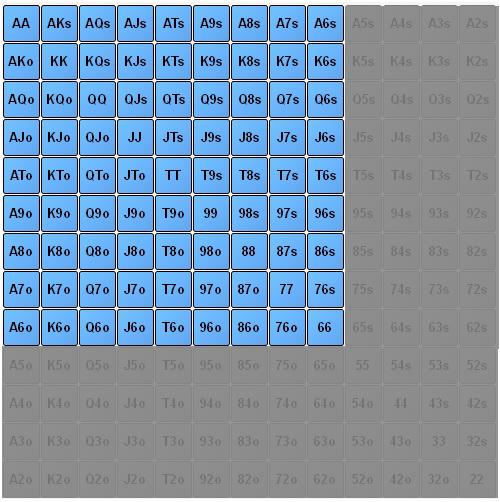- Short Deck Best Starting Hands
- Short Deck Starting Hands
- Short Deck Starting Hand Chart
- Short Deck Starting Hand Rankings
Jan 05, 2021 Most hands in Short Deck Hold’em appear stronger preflop than they actually are. In regular Hold’em most players consider a starting hand with any two Broadway cards (ten or higher) as at least playable. But with a short deck you’re dealt such a hand almost one third of the time. The 36-card deck in use in poker short deck is created by removing the 2 x s, 3 x s, 4 x s, and 5 x s from the deck (16 cards). That leaves the 6 x s up through the K x s as well as the A x s. A four-flush (flush draw) is a hand that is one card short of being a full flush. If your hole cards (which you are dealt at the beginning of a hand) are suited and there are two more of your suit on the board, this is a good hand, as it’s rare that another player will have two hole cards of your suit. Short Deck Rules. Short Deck follows a similar format to Texas Hold’em, but with a few crucial differences!Most notably, cards below a 6 are removed, leaving a 36-card deck. Our guide will quickly get you up to speed, and you’ll soon discover why the game is so popular with modern high-stakes pros!
Some starting hand tips for Short Deck Hold’em
Low connectors such as 7♣ 8♠ are going to have less value, as even if we flop a straight say on a 9♠ 10♠ J♣ board then someone could easily have Q♣ K♠ and we are going to be drawing almost dead.
First 3 deposits only, Min deposit £10, Max total bonus £500 & 150 spins, Spin value varies, Best Starting Hands In Short Deck Poker 30x wagering (dep + bonus), 30x on spins, 5x conversion, selected slots only, full T&Cs apply.
Drawing hands on flush boards
Will prove less lucrative than in Hold’em for example, we have 8♠ 8♣ and the flop comes down 8♥ 10♥ K♥ in regular hold’em we still have 35% equity on this board even if our opponent has been lucky enough to flop a flush, as we can win with the board pairing or the case 8 rolling off. In Short Deck where flushes out rank full houses our equity is reduced greatly to below 7% as we will need to hit the case 8♦ and making 4 of a kind to bag the win. With other hands such as Q♠ J♠ we have zero equity against a flopped flush, so it is a good idea to keep the pot small with these types of holdings as flushes are so strong players are likely to slow play these types of boards in the hopes of opponents like us hitting our straight draws and then putting in large bets on the river.
Short Deck Best Starting Hands
Don’t be fooled by big pocket pairs hand strength
Hands like K♠ K♣ are still the second highest ranking hand however the equities run so close in this game that even against a hand such as A♦ K♦we will only drag the pot 55% of the time, compared to the 66% equity we would have with a 52 card deck.
Another eye opener for a new Short Deck hold’em player will be how much equity J♣ 10♣ has even against the strongest of holdings, such as A♦ A♠ we will win this around 40% of the time, around double our chances of that in regular hold’em where we would have 21.5%
Weak Ace High hands have poor playability in Short Deck

In regular No limit Hold’em an offsuit Ace high hand such as A♠ 8♣ would make us a favorite over a suited hand such asQ♦ K♦ in Short Deck hold’em the opposite is true, holding the suited connector would make us a 57% favorite over the Ace high hand. In general, we want to be playing the low offsuit combinations of Ace high rarely and if at all not in bloated pots, as there is never really a great outcome for playing a hand such as A♠ 8♣
For example, if the flop comes A♣ 8♦ J♦this can be deceiving for a modest player as a good flop, we have two pair! Great, Right?! Hmm, not really, these are dicey waters in Short Deck poker, say at worst our opponent is going to continue with a hand like A♥ Q♥ even against this hand we only have a small edge with 53% in equity. The dangerous part about continuing with a board like this in Short Deck is that there aren’t many good turns or river cards for our hand, any next card makes straights or better two pairs possible, any diamond makes a flush possible, if the Jack on the board pairs we will have our two pair counterfeited.
Pick good bluff candidates
Short Deck Starting Hands
Middle and bottom pairs are great semi-bluffing hands in Short Deck Hold’em because these pairs have less showdown value and so you are less incentivized to try to check down with them. When called you are more likely to improve your hand as there are fewer cards in the deck.
Have a mixed limping strategy

Limping into pots with a balanced range of strong, medium and weak holdings can not only allow you to see cheap flops with hands that play well on certain boards like suited connectors and pocket pairs trying to connect, but you can also balance this strategy by including hands like A♠K♣, K♣ K♠ and Q♠ Q♣ in your limping range, along with weak holdings such as 6♣ 7♣ and hands of this nature will serve two purposes.

Allows us to limp, 3bet for value VS any aggressive players that are raising hands such as A♣ J♠ and pairs such as 10♠ 10♣ profitably and play bigger pots with a strong range advantage or just pick up the pot pre-flop with even more dead money after the raise and any calls that followed.

The second part of this strategy that can be very lucrative for us, is playing a Pot with a deceptively strong hand after the flop, for example if we include Q♠ Q♣ into our limping range and the flop comes A♠ Q♦ 8♦ and our opponent has a hand like A♠ 8♣ then we are well disguised and set to win some bets from our opponent.

Want to play Short Deck Hold’em?
Join in the action today on Pokerstars.
Pokerstars are offering a great deal for new players, where you can get £20 Freeplay T&Cs apply.
There has never been a better time to get involved with this great new game mode on the site 6Plus Hold’em!
Short Deck Starting Hand Chart
Playing shorthanded NL is very different than playing in a full ring game. A shorthanded game is one with six or less players at the table. Unlike the traditional 9 or 10-handed games, it doesn't usually take that big of a hand to win shorthanded.
Hand values increase as the number of players in the game decreases, therefore in a shorthanded game you are going to have to play more hands. This is due to the blinds going around the table faster. Hands like KQ, AJ, AT, and small pairs can be played from earlier positions than they could be at full table.
Just because hand values increase however, doesn't mean you should go broke with a mediocre hand. When going to war you should always have a hand to go to war with.
In shorthanded play it is important to be extremely observant of your opponent's tendencies and styles of play. You will be presented with many more marginal decisions in a shorthanded game because you will be forced to play less than premium hands. You don't want to sit there and play like a rock because when you do eventually make a hand, observant opponents won't pay you off.
Many more hands will be played heads-up, and won before they get to showdown. This is why it is important to have a firm handle on your opponents' styles of play. Your play in many shorthanded situations will be based on your position at the table and your opponent's tendencies as opposed to the actual strength of your own hand.
It is best if you are just starting out in NL, to stick to full ring games. Once you have a good grasp of the basics such as betting strategy, position, and the play of hands, you can then try out shorthanded games. The reason shorthanded games aren’t good for beginning players, is the amount of marginal situations a player is faced with when playing against only a few opponents.
In order to avoid as many marginal situations as possible you should generally stick to premium hands as well as the hands named above. Try not to play any marginal hands out of position, especially hands like KJ, KT, AJ, etc. These can be trouble hands, even in a shorthanded game, so it is best that they are reserved for middle to late position.
Another way to avoid sticky situations is to constantly be observing your opponents. Figure out what kinds of hands they play from what positions. If a loose player limps in and you have position on him, it's not a bad idea to raise and try and isolate him. Hopefully the blinds will fold, and if the limper calls you will have position on him throughout the hand. You can make a lot of money in shorthanded games by finding players who will call pre-flop raises and fold on the flop frequently.
You must also realize that there is more variance involved in shorthanded play because of the faster nature of the game. The fact that you will be put in many toss-up situations, and the poor players at the lower and middle limits can wreak havoc on your bankroll if you aren't careful. You should be properly bankrolled to play any game regularly, but if you plan on playing shorthanded you may want to have a couple more buy-in’s available to you than a full ring game player, in the event of a downswing.
Short Deck Starting Hand Rankings
When playing shorthanded you must open up your starting hand standards, however not to the point where you are becoming a loose player. Try and keep yourself out of as many marginal situations as possible, and learn how your opponents play so that you can use it against them. If you play your cards, your opponents, and your position at the table efficiently, you will be successful in shorthanded games.